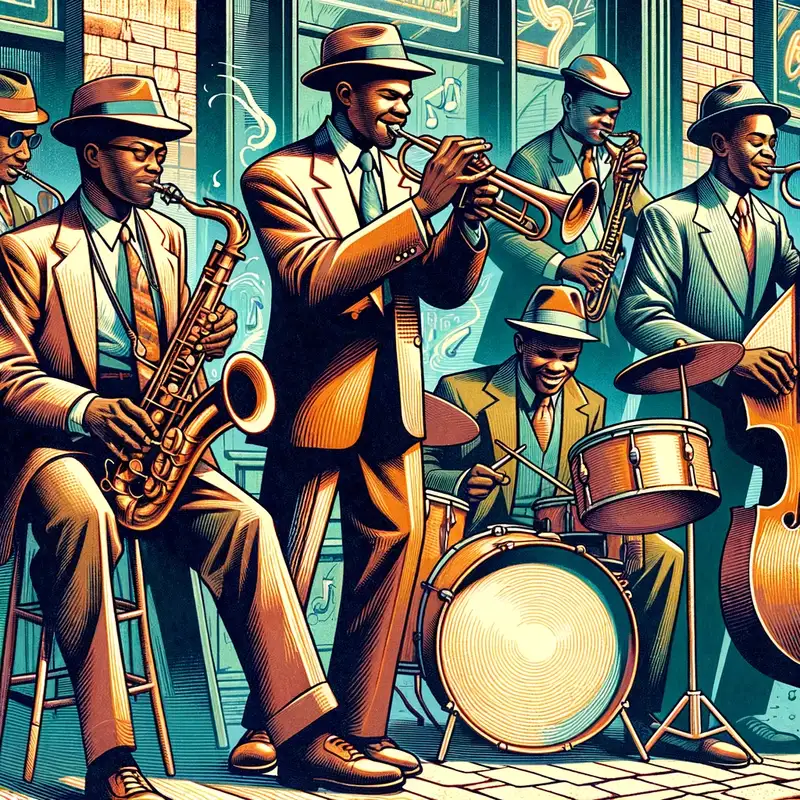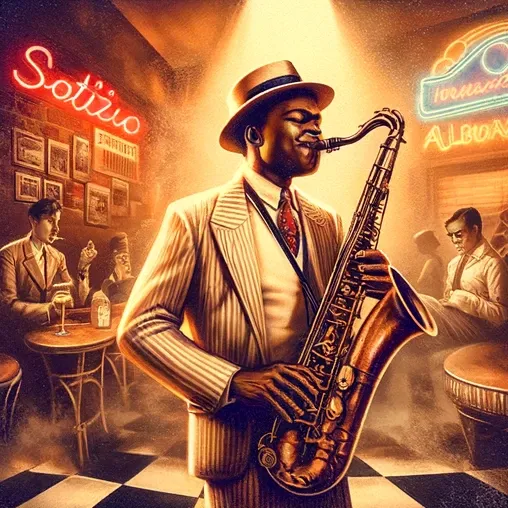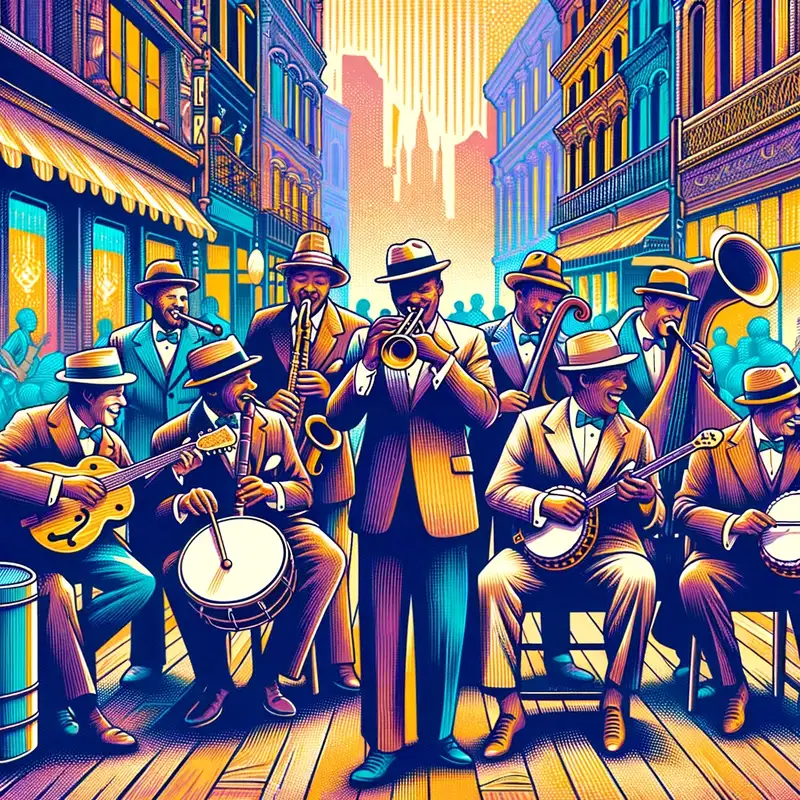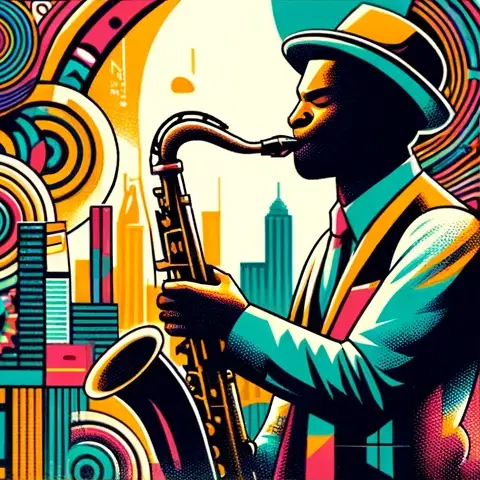Bebop Jazz

Imagine this: You’re in a smoky club in 1940s Harlem, and on the stage, a quartet is tearing it up. The speed? Blistering. The rhythm? Unpredictable. The solos? Mind-blowing. This is Bebop – the rebellious teenager of the jazz world.
Table of Contents
What’s the Bebop?
Born in the 1940s as a reaction against the dance-oriented swing bands, Bebop is a more intricate and complex form of jazz that focuses on improvisation and virtuosity, rather than the danceability that characterized earlier jazz styles like Swing.
Bebop Stars
Here are the names to drop if you wanna sound cool at jazz parties:
- Charlie “Bird” Parker: The alto sax virtuoso who was the face of Bebop.
- Dizzy Gillespie: A trumpet player.
- Thelonious Monk: A pianist who made dissonance an art form.
- Bud Powell: Another key pianist.
The Instruments
Forget those massive Big Bands. Bebop scaled things down to smaller combos, typically featuring:
- Saxophone – usually an alto or a tenor;
- Trumpet – front and center;
- Piano;
- Bass;
- Drums.
Lingo and Licks: The Language of Bebop
Ever heard phrases like “licks,” “riffs,” and “blowing changes”? Bebop musicians are masters of using musical phrases known as “licks,” which are like idiomatic expressions in a spoken language. Also, the term “blowing” doesn’t mean they’re huffing and puffing like the Big Bad Wolf. It’s just jazzy lingo for improvising solos over chord changes.
A Dissection of a Bebop
Bebop tunes often take standard chord progressions and give them a spicy twist. Here’s what you can typically expect:
- Head: The main theme of the tune, often a complex melody played in unison.
- Solos: Where each musician takes turns improvising over the chord progression.
- Head Out: Revisiting the main theme before wrapping up the tune.
Bebop and the Beatniks
Did you know? The Beat Generation of poets and writers like Jack Kerouac and Allen Ginsberg were big fans of Bebop. The music’s complex rhythms and anti-establishment vibe resonated with their own art, contributing to a larger cultural movement that questioned traditional norms.
The Bebop Legacy: From Bop to Hip-Hop
Sure, Bebop was a revolution, but it didn’t stop in the ‘40s and ‘50s. Artists like Sonny Rollins and Miles Davis carried its essence into newer forms like Hard Bop and Modal Jazz. Even today, Bebop’s influence can be felt in genres as varied as hip-hop and rock, proving its enduring relevance.
So, Why Should You Care About Bebop?
In a nutshell, Bebop redefined what jazz could be. It broke free from the constraints of commercial and dance-able tunes to embrace complexity, skill, and improvisation.


